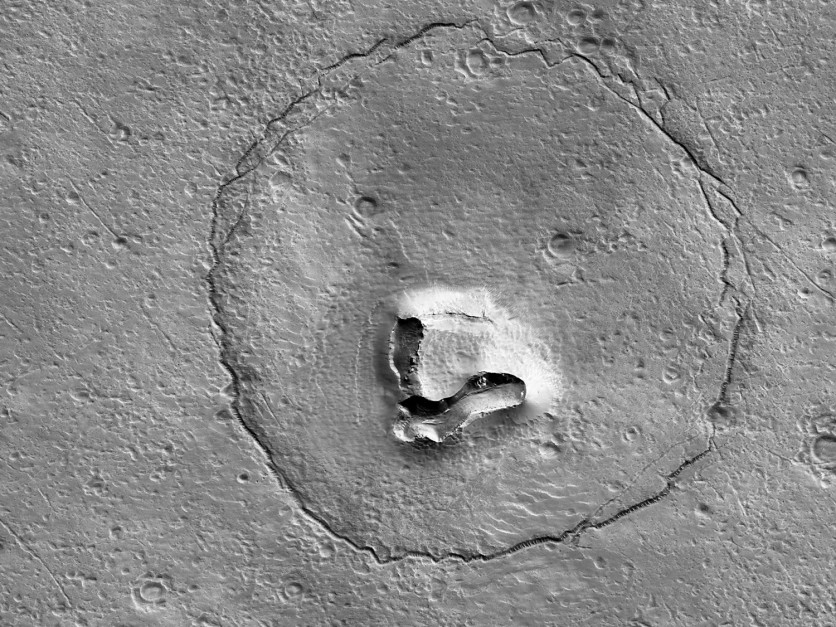Is there life on Mars? or is there a bear on the Red Planet?
NASA recently released a "bear-y" intriguing photo from Mars that appears like the face of a bear.
"There's a hill with a V-shaped collapse structure (the nose), two craters (the eyes), and a circular fracture pattern (the head). The circular fracture pattern might be due to the settling of a deposit over a buried impact crater. Maybe the nose is a volcanic or mud vent and the deposit could be lava or mud flows?," University of Arizona's HiRISE wrote in a description.

Does It Look Like a Bear?
NASA explains that the face is merely a rock formation. Hence, the image is only a coincidental outcome of a series of occurrences that took place on the Martian surface over a long period of time.
The High-Resolution Imaging Science Experiment, or HiRISE, onboard NASA's Mars Reconnaissance Orbiter captured this beastly rock formation.
HiRISE is a powerful camera just over five feet (1.6 m) long and has a focal length of 40 feet (12 m). It is mounted on the Nadir side of the spacecraft so it can regularly observe Mars.
It also has 14 detectors, each of which is protected by a filter in the red, near-infrared, or blue-green wavelength ranges. According to its NASA webpage, Hi-RISE can acquire photos comprising up to 28 Gigabytes (GB) data in as little as six seconds.
The 143-pound (65-kg) spacecraft, which observes the Martian surface from an altitude of 186 miles (300 km), is designed to research active surface processes and the evolution of the planet's landscape.
A large bear face is something that Hi-RISE could not miss because each image it takes has pixels that are roughly 12 inches (30 cm) broad and can discern an item as tiny as three feet on Mars.
Read also : 'Christmas Craterscape' from ESA's Mars Express Captures Stunning Holiday-Themed Phenomenon
Mysteries and Wonders
The Red Planet is brimming with wonders and mysteries that astronauts on Earth are eager to unravel. For instance, NASA just partnered with Pentagon's Advanced Research Projects Agency (DARPA) to create a nuclear rocket by 2027 that is expected to support the "Moon to Mars" mission of the space agency.
The mission will also include NASA's Artemis program to use the knowledge gained from the agency's planned lunar exploration to make human habitation on the Red Planet a possibility someday.
Elon Musk's SpaceX has also expressed his plans to "colonize Mars." The space company will soon launch the orbital flight of its highly-anticipated Starship, giving other private space businesses a run for their money.
Related Article : Garbage on Mars: Over 15,000 Pounds of Human Trash Pile up on the Red Planet, Researcher Says

ⓒ 2026 TECHTIMES.com All rights reserved. Do not reproduce without permission.




